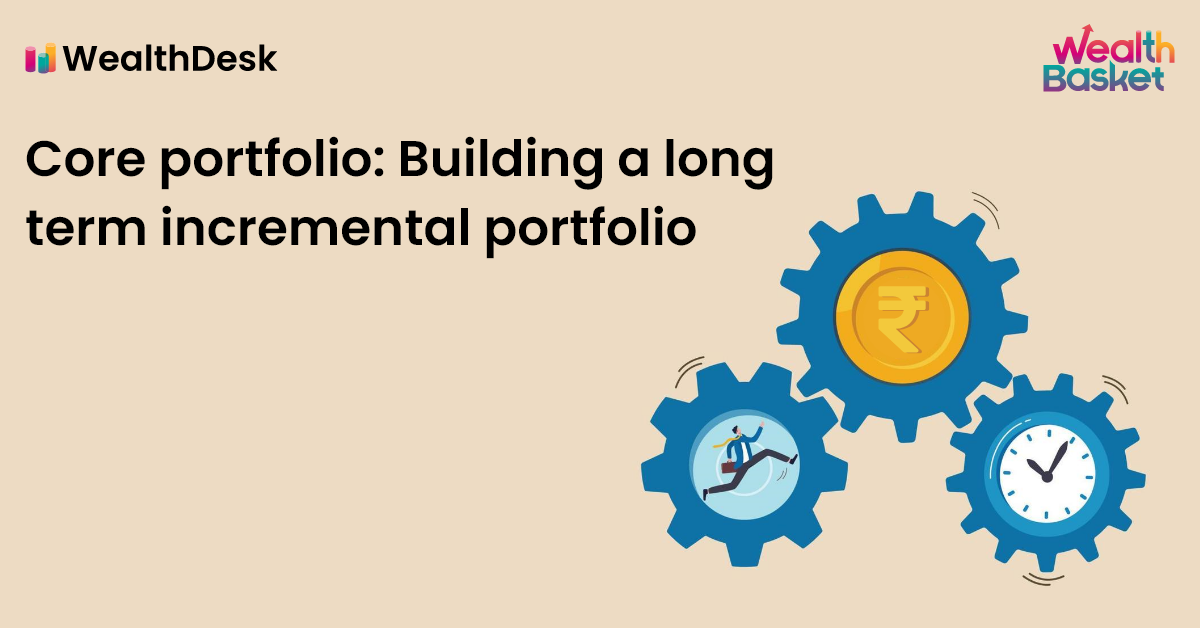Investors come to capital markets to build wealth and achieve their goals. Volatility or price fluctuations are part and parcel of investing. During volatile markets, many investors get worried and begin to exit their investments. It is not possible for everyone to time the markets. But it is essential to have a long-term horizon when investing for long-term growth and ignore the short-term fluctuations.
While building the portfolio for long-term investments, investors should decide on the risk they want to take and the time horizon for which they want to stay invested. Once such a plan is in place, they should have market volatility strategies in place.
During volatile times, they should review their strategy and make necessary changes. But they should not exit the investments and compromise on the long-term goals.
Investors looking to invest in capital markets should understand that it is impossible to eliminate volatility. However, once you know about the volatility in the asset class you are investing in, the risk can be reduced significantly. Market cycles, in general, test the investors’ commitment to long-term investing plans. The mantra should be ignoring the market cycles and the noise around them and remaining invested through managed volatility strategies.
Here are a few methods to manage volatility and reduce it to some extent while you are creating the best portfolio for long-term investment:
Diversification in Investments
The best way to manage volatility is to diversify your investments into different asset classes. Generally, when one asset class performs, other asset classes tend to go down and vice versa. For example, there is a tendency for gold to rise in falling equity markets. Since it is difficult to know which asset class will outperform or underperform, it is best to spread the investable amount across different instruments. A well-diversified portfolio should have a mix of debt, equity, or gold.
Diversification decreases volatility in the portfolio of an investor. It is due to the risk of one asset class being offset by another asset class. Thus, with proper asset allocation, it is possible to reduce the volatility and help in investing for long-term growth.
Monitoring and Rebalancing of Portfolio
The big mistake investors commit in their long-term investing is not to monitor their investments. To avoid risk and volatility, reviewing the portfolio is very vital. While monitoring, you can rebalance your portfolio. It may be done by selling investments that have increased in value and purchasing more that have underperformed. This helps in reducing the volatility of the overall portfolio.
Rebalancing the portfolio is a must and requires discipline. The portfolio should be reviewed in regular intervals. Investors can take advice from professionals if needed.
Invest for Long Term
Investing is a long-term game. If you are investing for the short term, there is a high probability that your purpose may remain unserved. However, if the investment is for a short period, your portfolio will be subject to a lot of volatility.
On the other hand, if your investment is for the long term, you will ignore the short-term volatility and focus on your goals. A long-term mindset for investing in equities is very crucial for wealth creation. It is important to stay invested in a particular asset for the long term, irrespective of volatility or short-term losses.
Invest at Regular Intervals
Investing in fixed amounts at regular intervals can also help reduce volatility. Investors can start a SIP (Systematic Investment Plan) in a fund or stocks as they are the best portfolio for long-term investment. This type of disciplined investing helps in rupee cost averaging. It means more units of a fund or stock are purchased when the price is low and vice versa. Also, the SIP way of investing reduces volatility and lowers the overall cost of investment.
Invest in Assets with Low Correlation
Different asset classes react differently to market and economic conditions. Depending upon the rise and fall in the market, some assets may move upwards and some downwards. It is known as correlation. It measures the tendency of two assets to move together.
To deal with volatility, you should choose investments with low correlation. Assets with low correlation would fluctuate comparatively less when the markets are very volatile. Investors can consider investing in debt funds or bonds with a low correlation and avoid high volatility stocks.
On WealthDesk, you can find portfolios of stocks and ETFs called WealthBaskets curated and managed by SEBI registered WealthBasket managers.
What are WealthBaskets?
A WealthBasket is a collection of equity stocks and ETFs. Each WealthBasket has a specific investment idea behind it. SEBI-registered investment professionals make these WealthBaskets. Some attractive features of investing in WealthBaskets:
- All underlying equity stocks and ETFs are on your Demat account
- More clarity and transparency in investing
- Invest without a lock-in
- Apply regular rebalancing updates in your WealthBaskets
- Earn dividends directly in your account
Conclusion
There is an inherent risk of volatility in investing. Investors should be wary of such risks and devise a volatility strategy to deal with them while investing in the best sectors for long-term investment in India.
Investors with a long-term horizon should not care about the portfolio’s volatility, and staying invested during volatile markets is the key. In other words, it is essential that investors remain invested in their assets and not worry about the short-term impact of volatility on investment returns until their goals are achieved.
FAQs
Investing in different asset classes will help in diversification. Also, investing in a phased manner or a SIP is the best way to manage volatility.
If you are looking for safe investments, you can consider investing in corporate bonds, government securities, covered bonds, etc. They offer comparatively low risks and decent returns.
Before you invest for the long term, you should have a goal. You should know your risk appetite, time horizon you have. Once all of this is sorted, choose an investment strategy and stick to it. Monitor your investments at regular intervals.
You cannot invest in the Volatility Index (VIX). However, you can trade in several other volatility derivatives instruments like an Exchange Traded Fund (ETF). Investors should understand that investing in an ETF can be risky.


















